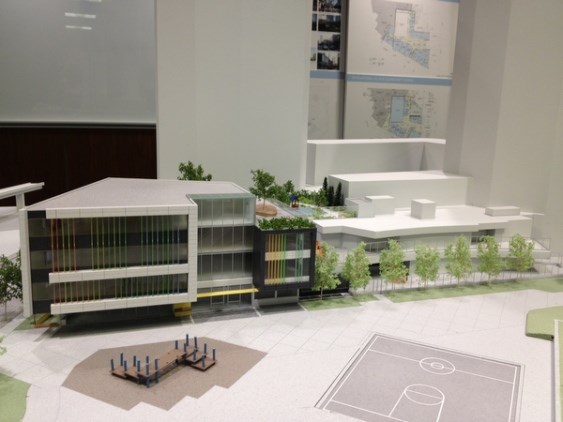Class room
Perhaps the most interesting detail in Ernst & Young’s review of Vancouver schools for the B.C. Ministry of Education is the disproportionate number in East Vancouver that are operating at 80 per cent capacity or less. Of 43 such schools, 37 are east of Ontario Street. Meanwhile, the Vancouver School Board is proceeding with a new four-storey elementary school at International Village accommodating 510 pupils, up from the 340 students originally anticipated.
Additional elementary schools are planned for Coal Harbour (pending a city commitment), False Creek (subject to a feasibility study that’s on hold), Wesbrook Village at the University of British Columbia, and the East Fraser Lands (pending discussions with the developer, Wesgroup Properties LP). VSB is mulling additional sites in the Cambie corridor and West End.
The plans reflect Vancouver’s shifting population and development patterns, explained Kelly Isford-Saxon, the VSB’s facility planning manager.
“What it’s showing is our areas of growth. What we’re surmising right now is [it’s] driven by … great leaps and bounds in house prices.”
With the benchmark price of a detached home approaching $1.1 million even in East Vancouver, couples are staying put in condos when they have children — and enjoying downtown’s amenities.
There are no plans to shutter underused east-side schools, but Isford-Saxon said VSB staff will watch which housing developments are most amenable to families to anticipate future student demand.
“Are we bringing [in] families? That’s a really huge question, and something [we] are going to be monitoring over the next couple of years as a lot of developments go from [development permit] into construction and come online.”
Affordability shifts
The latest housing affordability stats underscore the valuable nature of a Vancouver bungalow.
And where does that value reside? Redevelopment.
Regardless of who buys the properties, municipal zoning has made the single-family home a daunting prospect in Vancouver – and not just for those who need to sell their first-born to afford one.
With three dwelling units now allowed on every single-family lot, having just one means leaving density, and cash flow from potential tenants, on the table.
Small wonder that single-family properties are in demand and commanding a premium.
Government statistics indicate that the number of single-family homes in Vancouver has dropped from 65,390 in 2001 to 48,365 in 2006 and approximately 47,250 today. Meanwhile, the city legalized secondary suites in 2004 and has issued permits for nearly 1,200 laneway homes since piloting the housing form in 2009.
Small wonder then that the Real Estate Board of Greater Vancouver’s benchmark price for a single-family home in Greater Vancouver has almost doubled since spring 2006, from $659,700 to $1.1 million today.
Similarly, RBC Economics reports that housing affordability for a detached bungalow has decreased over the same period, requiring just 65.1 per cent of household income in spring 2006 and 85.6 per cent in spring 2015.
For more business news go to biv.com



